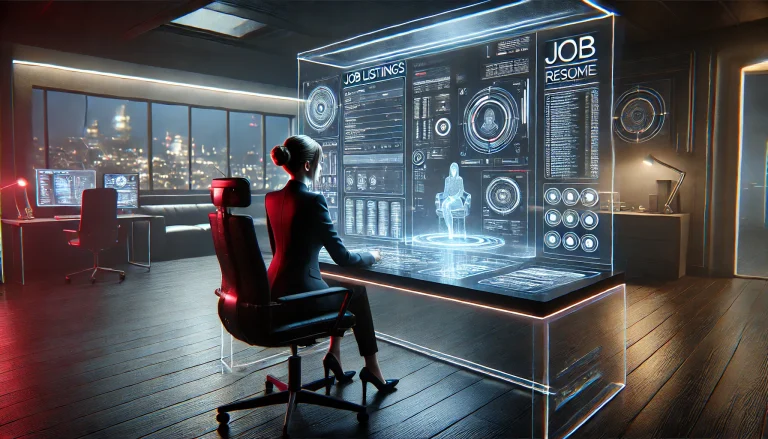Introduction
Writing a cover letter can feel like a daunting task, but it’s your golden ticket to making a strong first impression. While your resume lists your qualifications, the cover letter tells your story—why you want the job and why you’re the perfect fit. Done right, it can set you apart from other applicants and get hiring managers excited to meet you.
However, many job seekers fall into common traps, like making it too generic or repeating their resume verbatim. A poorly crafted cover letter can do more harm than good. That’s why knowing the key dos and don’ts is crucial. In this guide, we’ll walk you through the best practices and mistakes to avoid, so you can craft a compelling cover letter that lands you interviews. Let’s dive in!
Key Takeaways
- Do tailor your cover letter to each job application.
- Don’t use a generic template without customization.
- Do highlight specific achievements and skills relevant to the role.
- Don’t simply repeat your resume—add value with a personal touch.
- Do keep it concise, ideally one page long.
- Don’t forget to proofread for typos and grammatical errors.
Why is a Cover Letter Matters ?
A cover letter is more than just a formality; it is a chance to present yourself personally and express enthusiasm for the role. While not all employers are legally required to ask for a cover letter, many use it to assess communication skills, motivation, and cultural fit.
A Cover Letter Can:
- Demonstrate your desire to join the company and take on the role.
- Highlight your strongest skills and relevant background.
- Provide justification for career changes or employment gaps.
- Showcase professionalism and persuasiveness in communication.
When to Write a Cover Letter
Not all job postings require a cover letter, but including one is beneficial in the following situations:
- The job post specifically requests it.
- You are applying for a competitive position.
- You have a unique situation, such as a career change.
- You need to explain aspects of your resume, such as employment gaps.
Essential Tips for Writing a Cover Letter
1. Personalize Each Cover Letter
Always address the hiring manager by name if possible. The generic “To Whom It May Concern” feels outdated and impersonal. Research the company website or check LinkedIn to find the correct contact.
2. Hook the Reader with a Strong Lead
Your opening sentence should be engaging, not dry. Instead of a generic:
❌ “I am applying for X role.”
Try something more compelling:
✅ “As a digital marketing specialist passionate about storytelling, I was thrilled to see the opening at XYZ Company.”
3. Highlight Achievements, Not Responsibilities
Focus on measurable accomplishments rather than just listing duties. Use numbers when possible:
✅ “Increased social media engagement by 40% in six months through a new content strategy.”
❌ “Managed social media accounts.”
4. Align with the Job Description
Read the job posting carefully and reflect its language. If the employer is looking for a “detail-oriented project manager,” emphasize how your experience and skills align with those key terms.
5. Keep It Brief
A cover letter should be concise—no more than one page, ideally 3-4 paragraphs. Employers have limited time, so be direct and make every word count.
6. End with a Powerful Call to Action
Close with confidence and enthusiasm while inviting further discussion. For example:
“I would love the opportunity to discuss how my skills align with your team’s goals. Please feel free to reach out at your convenience.”
Cover Letter Don’ts
1. Do Not Just Repeat Your Resume
Your cover letter should complement your resume, not duplicate it. Instead of listing all your past jobs, explain how your experiences make you the ideal candidate for the role.
2. Do Not Use a Generic Template
Hiring managers can easily spot a copy-paste job. Customize your cover letter by mentioning the company’s mission, vision, or specific projects to show genuine interest.
3. Avoid Overusing Buzzwords
Clichés like “hardworking team player” lose impact if not backed by real examples. Instead, let your achievements and work speak for your qualities.
4. Don’t Skip Proofreading
Spelling and grammar mistakes can make you seem careless. Use tools like Grammarly and ask a friend to review your letter before submitting it.
5. Do Not Undervalue Yourself
Be confident in your abilities! Instead of saying:
❌ “I guess I could fit well,”
Say:
✅ “I am excited about the opportunity to contribute to your team.”
Confidence leaves a lasting impression.
Conclusion
The ultimate cover letter will get you an interview—not a rejection. To stay on the positive side, focus on personalization, quantifying achievements, and keeping it concise. Avoid typos and over-generalized information, as these can hurt your chances.
Whenever you apply for a job, ensure your cover letter puts you ahead, not behind!
FAQs
How long should a cover letter be?
A cover letter should always be one page or less. The ideal length is 3-4 paragraphs, as hiring managers appreciate conciseness.
Do employers read cover letters?
Yes! Employers, especially those hiring for writing-oriented positions, read cover letters. This is your chance to stand out from the competition.
Can I have AI write my cover letter?
AI can help with formatting and language suggestions, but you should customize it with your personal voice and experiences to make it truly effective.
Is it okay to submit a cover letter as a PDF?
Yes, submitting a cover letter as a PDF is best since it preserves formatting and is more universally compatible than a Word document.
What is the biggest mistake people make when writing cover letters?
The biggest mistake is being too general. A generic letter signals that you haven’t researched the company or position, making a poor impression on hiring managers.



